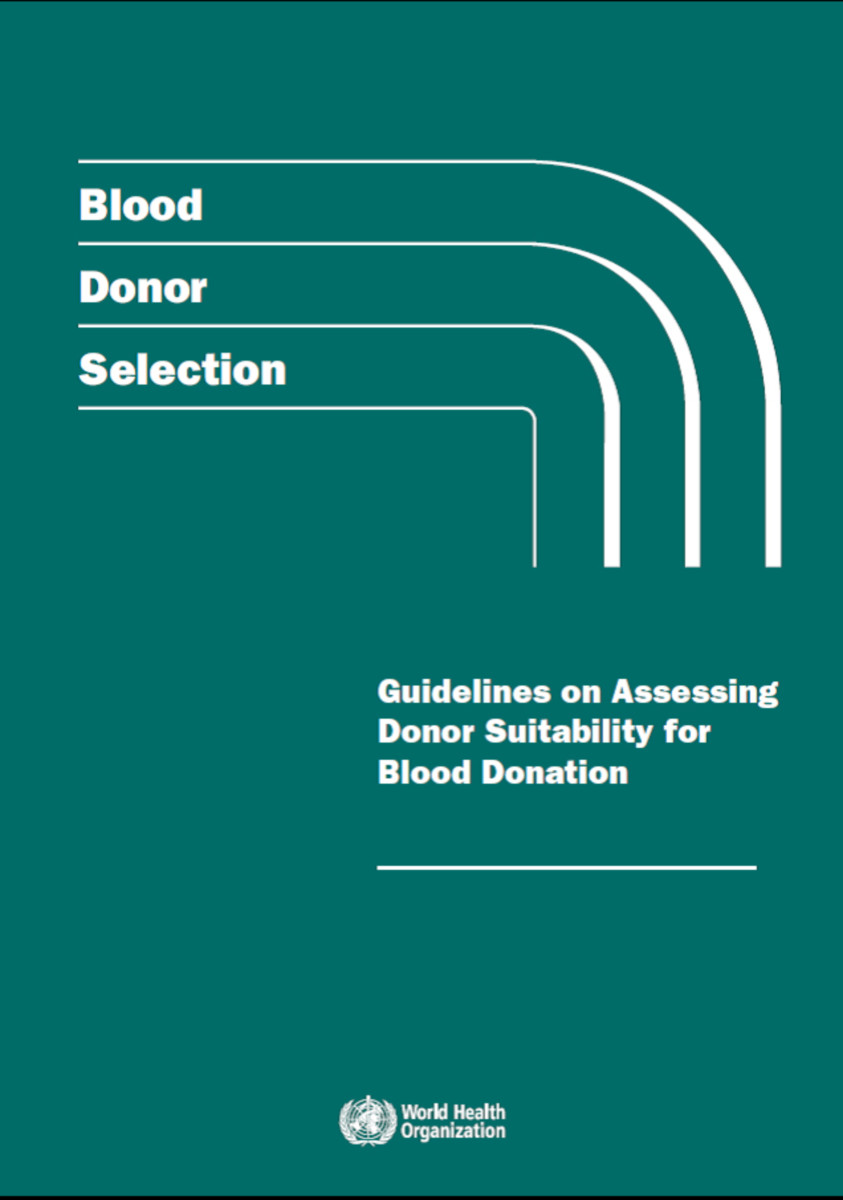Blood Donor Selection
Guidelines on Assessing Donor Suitability for Blood Donation
- Publisher
World Health Organization - Published
10th July 2013 - ISBN 9789241548519
- Language English
- Pages 126 pp.
- Size 8.25" x 11.75"
Blood transfusion services have the responsibility to collect blood only from donors who are at low risk for any infection that could be transmitted through transfusion and who are unlikely to jeopardize their own health by blood donation. A rigorous process to assess the suitability of prospective donors is therefore essential to protect the safety and sufficiency of the blood supply, and safeguard the health of recipients of transfusion and blood donors themselves, while ensuring that suitable donors are not deferred unnecessarily.
These WHO guidelines on assessing donor suitability for blood donation have been developed to assist blood transfusion services in countries that are establishing or strengthening national systems for the selection of blood donors. They are designed for use by policy makers in national blood programs in ministries of health, national advisory bodies such as national blood commissions or councils, and blood transfusion services.
The guidelines are presented in two parts. Part 1 addresses the requirements for an effective national system for blood donor selection and policy. Part 2 provides guidance on specific criteria for blood donor selection in relation to general donor assessment, donor medical history and risk assessment for transfusion-transmissible infections and technical recommendations on donor selection criteria.
World Health Organization
World Health Organization is a Specialized Agency of the United Nations, charged to act as the world's directing and coordinating authority on questions of human health. It is responsible for providing leadership on global health matters, shaping the health research agenda, setting norms and standards, articulating evidence-based policy options, providing technical support to countries, and monitoring and assessing health trends.


